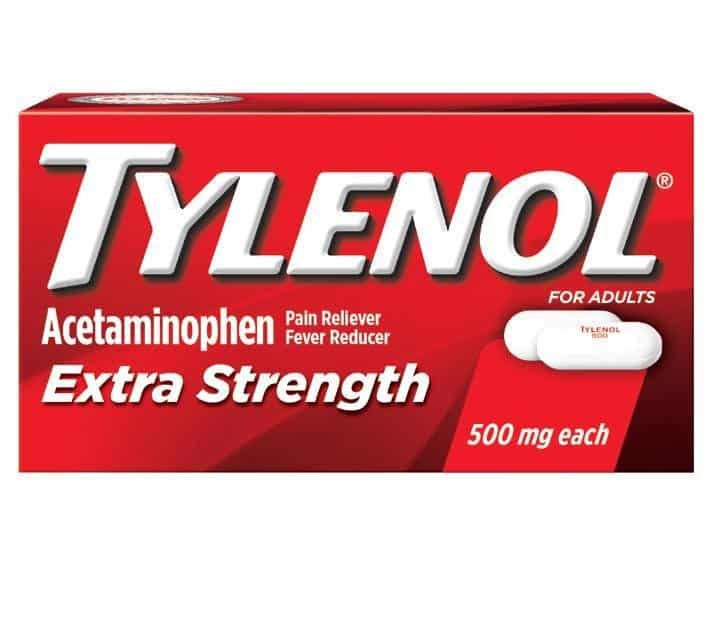What is PR? Importance of PR in Digital Marketing
One of the most important things for a strong brand to do is to appeal to its target audience and establish a close, sincere and trusting relationship with them. In order to do this, there are many alternatives to digital marketplaces. If you have a good PR company, you can easily and quickly create ads aimed at your target audience, and design these ads specifically for sophisticated, filtered audiences. A strong PR is as much about your brand’s social, political stance and identity as it requires the quality of your brand’s services and products.
Today, we will talk with you about what PR means, the methods of managing public relations better, and the importance of proper prestige management in your brand’s digital marketing processes, accompanied by Screpy experts. If you are ready, we start right now!
Try for free to boost your website traffic!
What is PR?
PR, which stands for Public Relations, is all of the communication processes that allow you to manage the public perception of your brand. Public relations activities include your advertising efforts to spread certain information or perception about your brand, the content you share on special occasions with social importance and show your brand’s sensitivity, your sponsorships for environmental awareness projects, and much more.

Being able to manage public relations correctly requires attracting the attention of your target audience through issues that will positively affect your brand profile, even if they are not directly related to your product or service. This type of marketing process, unlike advertising, does not try to “sell something” directly, nor does it use language to motivate the target audience to buy products. Instead, it strengthens the brand’s language by establishing a new generation bond between customers and the brand.
Especially in the 21st century, when every brand has hundreds of competitors in almost every sector, wouldn’t it make sense for your brand to stand out with its social sensitivity and character as well as its product and service quality? So do we. You can do this with public relations work!
2 Definitions of Public Relations
There are a few people who describe this concept, which at first glance seems ambiguous, in quite detail. We can examine together what these people are saying.
”the art and social science of analyzing trends, predicting their consequences, counseling organizational leaders and implementing planned programs of action, which will serve both the organization and the public interest”
What exactly does this sentence tell us? Public relations actually requires constantly analyzing trends in order to find ways to communicate with the public at that time. Detailed analysis of trends, influencing the leaders of the target audience, making certain action plans and acting in line with these plans form the basis of public relations. In fact, what is done in public relations is to take actions where the organization and the public can receive mutual benefits.
Another definition made is as follows:
“Public relations helps an organization and its publics adapt mutually to each other.”
Here, too, it is underlined that while the brand expresses itself, it actually provides a mutual benefit by providing information to its target audience.
Explore More: The Importance of Public Relations
You know what the old people say, ”Advertising is what you pay for; publicity is what you pray for.” Okay, this sentence tells us a lot. Well, does any advertising promise us a strong public relations commitment?

To tell the truth, no.
- First of all, in order to establish public relations, communication must be strategically constructed.
- This communication should basically give a message to the audience addressed by the brand in question.
- You may need a very strong public relation specialist in order to regain control of the brand’s reputation in any real or unreal news or scandal that has emerged about the brand.
- Public relations management is carried out in each of the press conferences, media interviews or speeches held by the brand to express itself to the public.
- Public relations has a very high impact not only on the brand’s target audience and customers, but also on the brand’s stakeholders. This effect may cause a change in the market value of the brand.
Examples of Well-Built Public Relations
When we talked to you earlier about the power of public relations, we told you that he was “excellent at managing the crisis narrative.” So what exactly do we mean when we say this? Let’s go right away with an example.
Tylenol and Public Relation Actions Have Taken
Previously, a product called Tylenol, manufactured by Johnson & Johnson in the early 1980s, was laced with cyanide. This caused exactly seven people to die with these bottles. This incident alone created enough horror to completely wipe the brand from the market.

So, what did the brand do in this situation? He immediately formed a strong public relations team and announced that instead of defending his products, he decided to have his products completely withdrawn from stores. The brand, which tells all its target audience not to buy the products of the brand, made a detailed study after collecting all the products and produced a seal that would give information about the reliability of the products. Later, it re-introduced these new bottles with the approval of various scientific studies.
This type of public relations work has benefited both the brand and the audience as it has been said:
1. The brand was able to salvage the situation with only a few months of stagnation, while it could be wiped out from the market completely.
2. The public got clear information about the products instead of worrying about the brand’s products, and the brand had to make certain production process improvements to fix public relations.
These two important articles are the most important representation of the benefits of public relations for both the brand and the target audience.
What Does PR Do? What Are the Purposes of PR?
The PR work of brands in the digital sector stands out more than anyone else. Because these brands reach their target audiences by using all tools from social media platforms to search engine marketing models and share their PR post. So, what does all this work do? Let’s examine together:
- Increasing the sales rates of the brand is actually the indirect goal of PR. The PR officer, who usually aims to be the voice of the brand, aims to bring the sales rates to the determined level at the end of the job and to keep the brand alive.
- One of the important goals of PR is to create a loyalty bond between the brand and its target audience by regaining the trust that has been lost for any reason.
- Spreading an industry reputation and increasing the influence of the brand by making it known is a common purpose of using PR.
- Making an impact with a value other than the product or service sold to the target audience is one of the greatest benefits of PR.
Should I Work With A PR Specialist For My Brand? What Do PR Professionals Do?
If you are using Screpy for various control mechanisms such as SEO, keyword tracking and uptime monitoring in the digital world, you should actually pay attention to your brand’s PR efforts. Because all these are actually presented as a whole and only when they are together, they provide the results you demand.
So, should you work with a PR specialist for your brand? Honestly, reputation management is very valuable in today’s “lynching” world. If you have a budget other than digital marketing for this, we strongly recommend that you work with a PR specialist. A PR professional will do the following for your brand:
- To create a profile for the target audience and to report the current status of the brand perception in this audience.
- Identifying actions that can be taken to change the reported situation and generating different strategies for different audience segments
- Deciding which channels or contexts to use for the creation of public relations
- To generate proactive results by regularly analyzing the public relations strategies of competitors
- While managing the prestige of the brand, to consider all the details from the social character of the brand to its products, from the general market value to its prestige and to make the right planning.
- To produce content that can appeal to people, institutions or organizations that want to invest in the brand, or to communicate with stakeholders and brand investors through various channels
- To ensure that individuals working within the brand know what they need to know in order to protect the reputation of the brand within the scope of public relations. Inform the brand about various emergency strategies or don’ts.
Which Digital Channels Can Be Used in PR Relationships?
Hey, we now know that digital channels are very popular in PR relationships. That’s why we want to show you what you can do with a few creative ideas.
Using Instagram for PR
Instagram is one of the best ways to manage public relations nowadays. It is a platform where you can easily communicate with your target audience through Instagram, reels, stories, IGTV and regular posts. Instagram can be an effective method to show your brand awareness on special occasions or to communicate directly with your audience in case of any crisis and resolve the situation. The most important feature of this platform is that it communicates with the consumer instantly and in real time, unlike traditional media. The story you share will reach your audience instantly, and if the audience waiting for your explanation, they will easily contact you.
Using Twitter for PR
Twitter is a platform that is frequently used especially for following current events and getting news from the world. From here, you can easily and quickly manage public relations using the profile you have. You can use Twitter to convey the explanations expected from you or to initiate a social responsibility project at any time. For example, some brands in the world make a food donation campaign based on the number of tweets posted with a certain tag. This type of work shows the brand’s sensitivity to the social world and living things and creates a strong relationship between the brand and the customer.
Similarly, let’s say your company’s app is broken and forwards a false notification to its users on a day of national mourning. In such a situation, taking the fastest action and posting an apology on the official Twitter account will allow your audience to be convinced that the situation is a misunderstanding much faster.
As you may notice, PR can be done to prevent a negative news from negatively affecting your reputation or to perform positive reputation management.
Using Traditional Media for PR
For PR, it is necessary to know exactly what values your target audience adheres to, how they organize their social life, and to be able to build advertisements in traditional media on these values. A philosophy known as values-based advertising or marketing suggests organizing parallelism between your brand’s product or service and the values of your target audience and building your marketing on this parallel.

Imagine you are a fast-food chain. You can build your marketing process based on how delicious your burgers are. But instead, you can advertise your taste by saying that you value health and the well-being of future generations and underlining how healthy your hamburgers are produced. While the first directly market the product, the second addresses the “health” value of your target audience.
While doing PR management, you need to hold on to these values and try to find new “common points” with your customers through your commitment to these values. Business alliances, social responsibility, or customer values are the basic concepts that you should take advantage of in this process. For example, if you as a company sponsor a community planting nationwide, it’s all about PR. You will see how your profile changes after you have introduced your name to people correctly. To do this, you can broadcast commercials on traditional media channels.
What are the Types of PR?
PR is generally done to provide publicity. Therefore, the color of your work may change depending on which segment of the public you are addressing. In general, we will talk about the PR types that are frequently used in the continuation of this content. If you’re ready, let’s get started.

PR for Media Relations
In general, PR work carried out to establish good and close relationships with publishers in digital and traditional media is like an investment in the future. When you establish good enough relations with broadcasters and channels, the number of channels you can benefit from in times of crisis will increase and your PR efforts will bear fruit.
PR for Investor Relations
PR work is also done to increase and protect the financial value of the brand in the market. Certain studies carried out for the brand’s stakeholders or to manage the brand perception of individuals who will make new investments in the brand underline that the brand in general has a management process with a valuable, promising and strong team.
PR for Government Relations
In order for a firm to easily take the right steps, enjoy various exceptional advantages in certain situations, or solve certain problems by communicating with the government, it needs to do the right PR work. Protecting the environment, following a policy in accordance with consumer laws, and similar details are all PR activities that protect government relations.
PR for Community Relations
Adapt to the sociopolitical atmosphere by making the right studies that refer to the sector and target audience of your brand. Be the brand or company of your era. In this way, the areas where you have a say will increase and you will gain the power to direct the issues that concern your sector. This will produce a great result.
PR for Internal Affairs
A correct PR work enables the employees of the brand to realize the prestige of the brand. For this, it is extremely important to carry out studies that will increase the brand loyalty of the employees and to give them various briefings that show the value of the brand they are working with.
PR for Customer Relations
One of the most common types of PR, customer relations-based public relations, involves presenting your product, service, or brand profile to your target audience. With various marketing processes and advertisements, you can strengthen PR and achieve good results.
FAQ
Are advertising and PR work the same thing?
Advertising and PR work require parallel processes, but they are not the same thing. Advertising work involves promoting a product or service directly, and the call-to-action language is foreground. PR work, on the other hand, can show the ethical values taken into account while producing the product with certain advertising scenarios or the stance of the brand on a certain subject. Revealing the brand identity is the basic logic of PR.
What is personal PR work?
Personal PR work has become widespread recently, with individuals becoming “brands” along with social media. In such studies, the person markets his/her own name to create a brand value and presents his/her influence power as a marketing area that brands can benefit from. Personal PR work can highlight culture, lifestyle or influence power and can be conducted through a variety of digital channels. In addition, it can be beneficial for these people to participate in various social responsibility projects in order to carry out PR activities focused on their target audience.
What does a PR person do?
The main thing that the PR specialist does is to produce and implement various strategies that will properly regulate the brand’s relations with the state, competitors, other actors in the sector, target audience or the media. In this way, social relations that can be used when necessary are built and it becomes easier to manage the brand perception of the target audience.
What skills do public relations need?
In general, the following skills will facilitate PR management:
High power in terms of IT skills
Crisis management with creative thinking
High strength in communication skills
High interpersonal skill
An advanced character in terms of presentation and narration skills
an initiative style
High experience and ability to plan, develop and put them into action
How competitive is public relations?
The need for PR specialists is increasing day by day. For example, last year, in 2020, the number of firms seeking PR specialists increased by 20 percent compared to the previous year. One of the biggest reasons for this is the necessity of PR activities in the digital world.
Explore More About Marketing:

